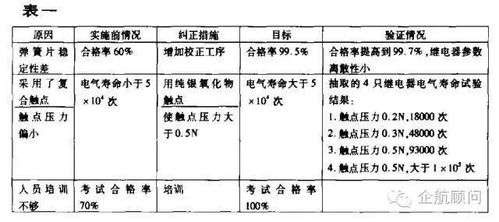纺织品维护方式全解析
: An Overview of Textile Care Methods,Textiles, being the backbone of our daily lives, require proper care to maintain their quality and extend their lifespan. This paper provides a comprehensive analysis of various textile care methods, including washing techniques, dry cleaning, ironing, and stain removal. It emphasizes the importance of using gentle detergents and cold water when washing, as well as avoiding harsh chemicals that can damage the fabric. Additionally, it discusses the benefits of using dry cleaning services for delicate or expensive textiles, such as wool and silk. Ironing techniques are also explained, with tips on how to prevent shrinkage and creases. Finally, stain removal methods are introduced, including spotting and pre-treating stains before washing. Overall, this paper aims to provide readers with practical advice on how to take care of their textiles effectively, ensuring they remain in good condition for years to come.
Introduction: The textile industry is a vital sector that contributes significantly to our daily lives. From clothing and household items to furnishings, textiles play a crucial role in providing comfort, style, and functionality. However, with regular use, they can become damaged or lose their quality over time. In this article, we will explore the various ways to maintain and care for different types of textiles to ensure they remain in good condition for years to come.
Table 1: Common Types of Textiles and Their Maintenance Tips

| Textile Type | Maintenance Tip |
|---|---|
| Clothes | Machine wash cold, gentle cycle, and hang dry. Avoid using bleach or fabric softeners. Iron on low heat if necessary. |
| Upholstery | Vacuum regularly to remove dust and debris. Clean spills immediately with a damp cloth or sponge. Use specialized cleaning solutions for tough stains. |
| Carpets | Vacuum regularly to remove dirt and debris. Spot clean spills with a mild detergent and water. Professional cleaning may be necessary for deep cleaning. |
| Bedding | Wash in warm water and tumble dry on low heat. Avoid using harsh detergents or fabric softeners. Dry on low heat to prevent shrinkage. |
| Wool and Cashmere | Gentle handwashing with lukewarm water and mild soap. Avoid rubbing as it can damage the fibers. Air-dry or use a low heat setting on a wool dryer. |
Case Study: How to Clean and Care for a Fabric Sofa
One of the most common textiles in homes is the sofa. It not only provides comfort but also adds aesthetic value to the living room. Here are some tips on how to clean and care for a fabric sofa:
-
Regular Cleaning: Schedule a professional cleaning service to deep clean your sofa at least once a year. This will help remove any built-up dirt, dust, or stains.
-
Spot Cleaning: If there are minor spills or stains on your sofa, use a mild detergent and water solution to clean them up quickly. Test a small area first to check for colorfastness.
-
Vacuuming: Regular vacuuming helps remove dust, pet hair, and other debris from the sofa's surface. Use a soft brush attachment on your vacuum cleaner to avoid scratching the fabric.
-
Hand Washing: For delicate fabrics like velvet or silk, hand washing with lukewarm water and mild soap can be done. Rinse thoroughly after washing to remove any soap residue.
-
Drying: After cleaning, lay the sofa out to dry flat to prevent wrinkles. If you prefer, use a low heat setting on the tumble dryer to gently air-dry the fabric.
-
Protection: To protect the sofa's fabric from fading and wear, use a protective cover or spray when not in use.
In conclusion, maintaining textiles requires consistent care and attention. By following the tips outlined in Table 1, you can keep your favorite clothes, furniture, and home decor looking their best for years to come. Remember, prevention is key; regular cleaning and proper handling can significantly extend the lifespan of your textiles.

大家好,今天我们来聊聊纺织品维护方式,纺织品是我们日常生活中不可或缺的一部分,正确的维护方式不仅可以延长其使用寿命,还能确保穿着的舒适和美观,下面我们将详细介绍纺织品维护方式包括哪些内容,并附上相关案例说明。
纺织品维护方式概述
纺织品维护方式主要包括清洗、保养和修复三个方面。
清洗
清洗是保持纺织品清洁和卫生的基本方法,根据不同的材质和用途,清洗方式也有所不同,棉质衣物适合手洗,而丝绸衣物则适合干洗,定期清洗还可以去除污渍和异味,保持衣物的清新和美观。
保养
保养是指对纺织品进行定期检查和维护,以延长其使用寿命,保养内容包括定期更换洗涤剂、避免过度磨损、避免阳光直射等,对于棉质衣物,可以选择使用专门的洗涤剂进行手洗或干洗,以保持其柔软度和光泽度,对于丝绸衣物,则需要注意避免接触粗糙物品和高温物品,以防止其变形和破损。
修复

修复是指对损坏或破损的纺织品进行修复,使其恢复原有的功能和外观,修复方法包括修补破损部位、更换损坏部件等,如果衣物上的某个部位出现了磨损或损坏,可以选择购买相应的配件进行更换。
案例说明
下面我们通过一个具体的案例来说明纺织品维护方式的应用。
假设有一位消费者购买了一件丝绸衬衫,由于长时间使用和存放,衬衫出现了磨损和污渍,为了解决这个问题,消费者采取了正确的维护方式,他首先选择了专业的干洗店进行清洗,使用了专门的丝绸洗涤剂和护发产品,以确保衬衫的清洁和保养,清洗后,衬衫焕然一新,光泽度得到了很好的保持,消费者定期对衬衫进行保养,注意避免过度磨损和阳光直射,以确保其使用寿命,如果衬衫出现破损或损坏的情况,消费者选择购买相应的配件进行更换,确保衣物的完整性和美观性。
纺织品维护方式的具体内容及说明
- 清洗方式:根据材质和用途的不同,清洗方式也有所不同,手洗适用于棉质衣物、机洗适用于合成纤维衣物等,选择合适的洗涤剂和清洗方法也是关键,否则可能会导致衣物损坏或变形。
- 保养方法:避免过度磨损、避免阳光直射、定期更换洗涤剂等都是保养的重要方面,对于棉质衣物,可以选择使用专门的洗涤剂进行手洗或干洗;对于丝绸衣物,则需要注意避免接触粗糙物品和高温物品。
- 修复方法:对于损坏或破损的纺织品,可以选择修补破损部位或更换损坏部件等方法进行修复,如果衣物上的某个部位出现了磨损或损坏,可以选择购买相应的配件进行更换,对于一些特殊的损坏情况,如拉链卡住、纽扣脱落等,也可以寻求专业的维修服务进行处理。
纺织品维护方式包括清洗、保养和修复三个方面,正确的维护方式不仅可以延长纺织品的使用寿命,还能确保穿着的舒适和美观,在实际生活中,我们应该根据衣物的材质和用途选择合适的维护方式,并注意避免过度磨损和阳光直射等不良因素,如果衣物出现损坏或破损的情况,也应该及时采取修复措施进行处理。
Articles related to the knowledge points of this article:
Dynamic Innovations at Mingyang Home Textile Manufacturer
The Dynamics and Innovation of Zunyi Textile Brand Womens Fashion
Exploring the Art of Handmade Textiles:A Tutorial for Beginners
The Elegance of Craftsmanship at Gaoyang Winter Cloud Weaving House



